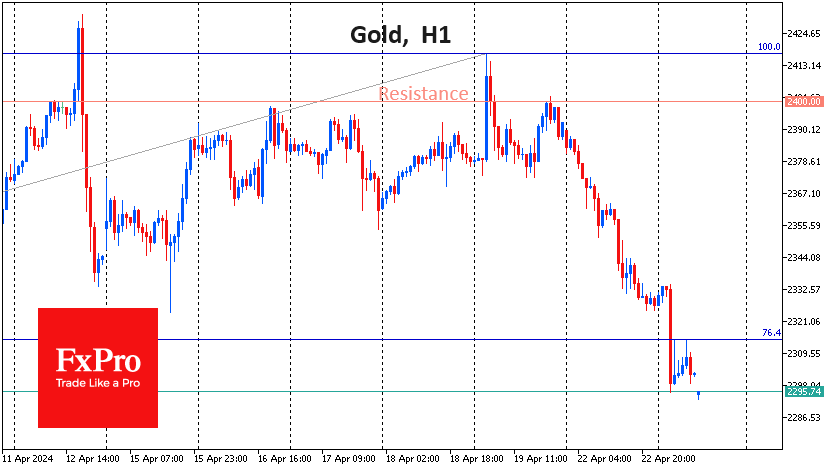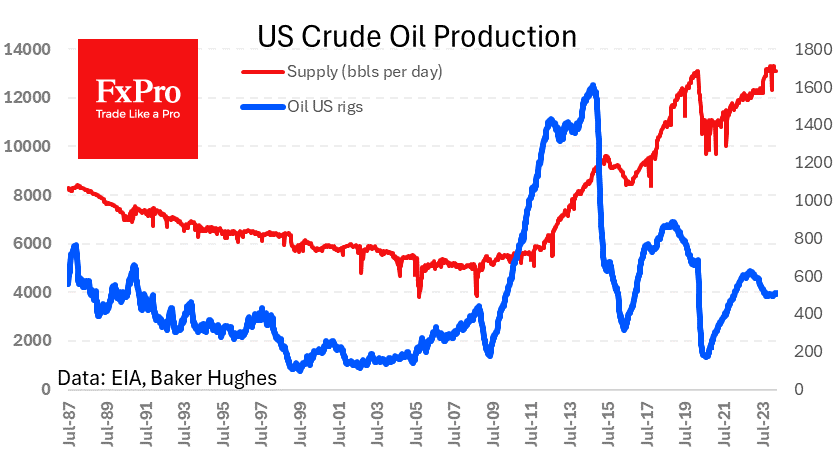Where are the targets of correction as market sell-off widens?
February 26, 2021 @ 12:01 +03:00
Pressure returned to the markets on Thursday, led by high-tech companies, causing a 3.5% plunge in the Nasdaq and pushing back the S&P500 by 2.5% and the Dow Jones by 1.75%. Asian bourses continue with a 3%+ decline on Friday.
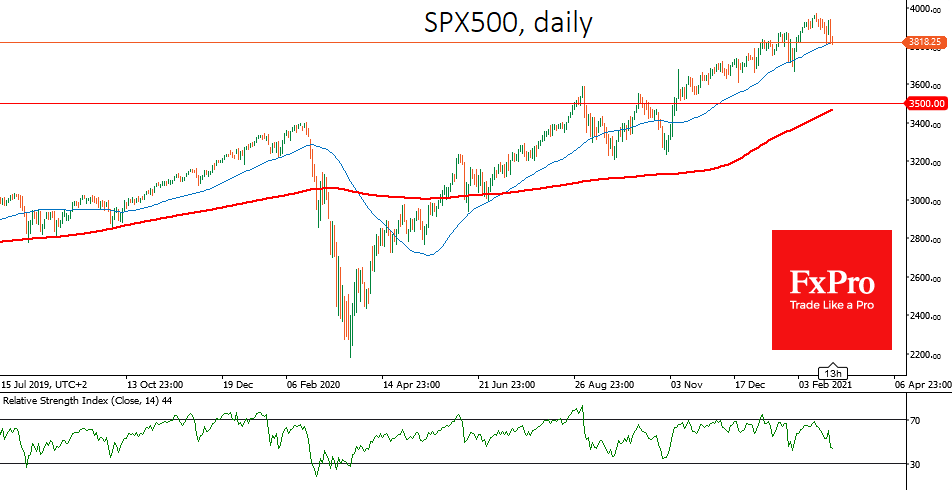
Gold rewrote eight months lows, trading at $1760 on Friday morning. The pressure on equity and gold markets increases with the continued sell-off in debt markets, where yields on 10-year US government bonds exceeded 1.6% yesterday.
Rising yields in the US, European and Japanese debt markets have sharply reduced risk assets’ attractiveness. Currencies and emerging markets were hit especially hard yesterday. Currencies such as the Mexican peso, South African rand and Turkish lira lost more than 3% intraday.
Commodity-related currencies failed to gain above significant round levels against the dollar as AUDUSD retreated to 0.7820 after going above 0.8000, while USDCAD is up to 1.2620 after updating 3-year lows at 1.2470.
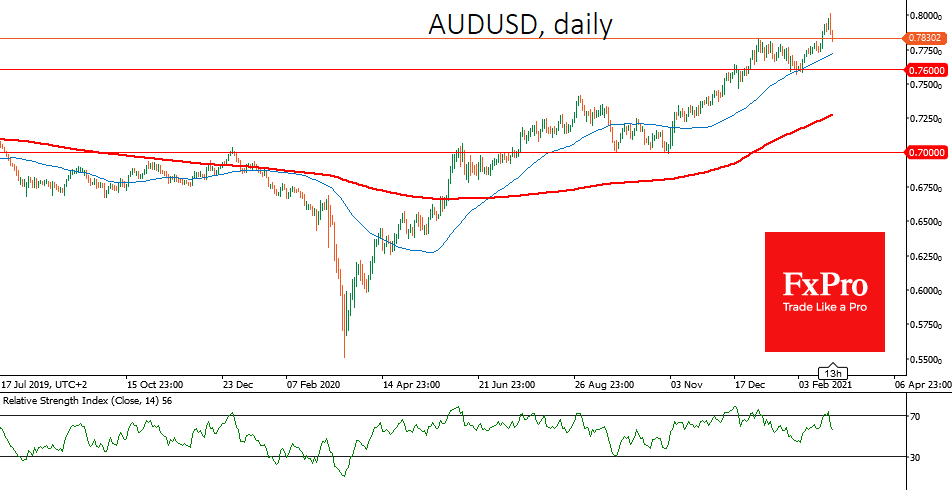
The conventional wisdom is that rising bond yields in developed markets increase their attractiveness by sucking capital out of other markets. But so far, this has not been enough, as debt markets remain under pressure and yields continue to rise.
As we noted earlier, Powell’s comments have not calmed the markets as they do not promise an increase in bond purchases. However, a new bailout package of up to 1.9 trillion from the government is on the way. Perhaps the sharply increased volatility will force the Fed to change its mind about its programs to support the economy by injecting more money into the markets.
Still, we may be merely witnessing a shake-out at the end of the month and purchases of risky assets will resume in March. In this case, it is worth paying attention to the crossing of several red lines, which will intensify the sell-off.
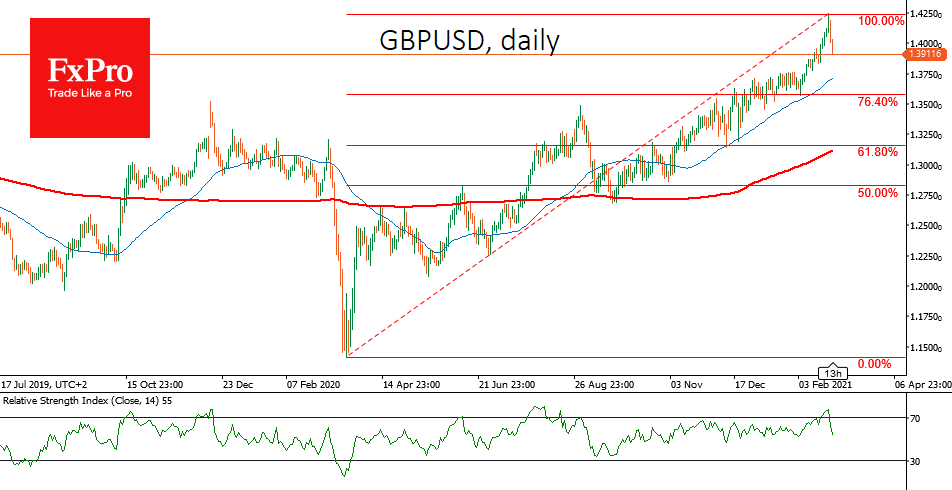
The S&P500 is trading at 3800, which is close to the 50-day average. A consolidation well below this line, like a year ago, would increase the volatility and widen the sell-off. The next target of the correction then could then be 3500, near where the 200-day average passes.
A breakdown of GBPUSD under 1.3850 would soon open the way to 1.3600. The most pessimistic scenario now appears to be a pullback of GBPUSD to 1.3100.
AUDUSD, after the unsuccessful test of 0.8000, can roll back to 0.7600 quite quickly, especially if it continues to be helped by the increase in QE from the RBA, as occurred recently. A deeper target for the correction seems to be 0.7000.
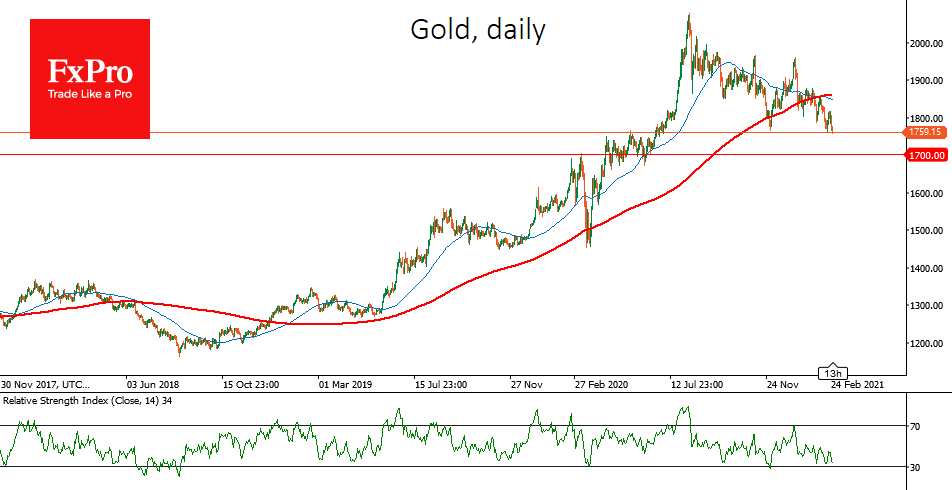
EURUSD is about to test support at 1.2100, and after that, the pair might see little buying up to 1.1800.
For gold, the next significant level is $1700, a failure under which would be a complete surrender of the bulls that pushed the price up for two years through to August 2020.





